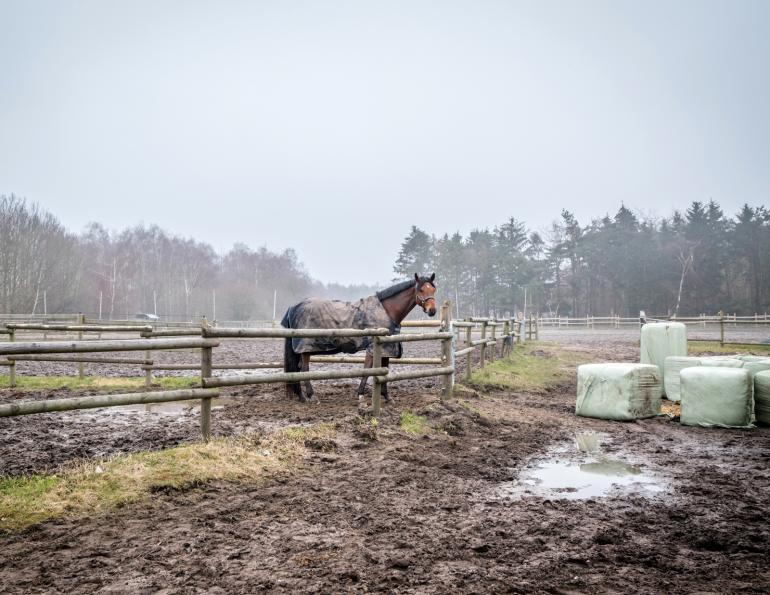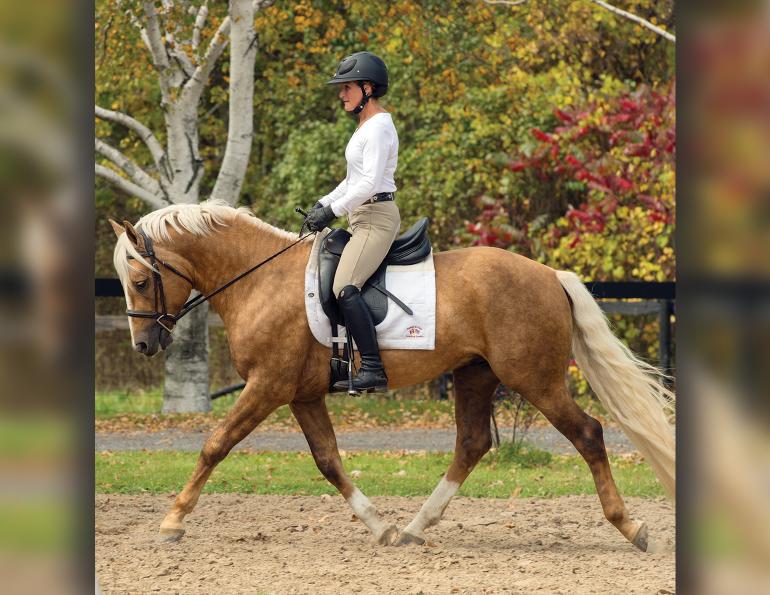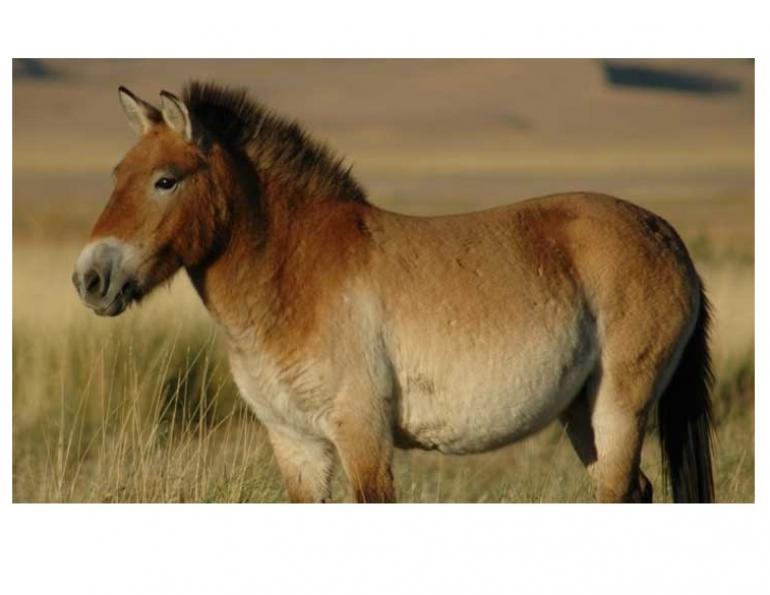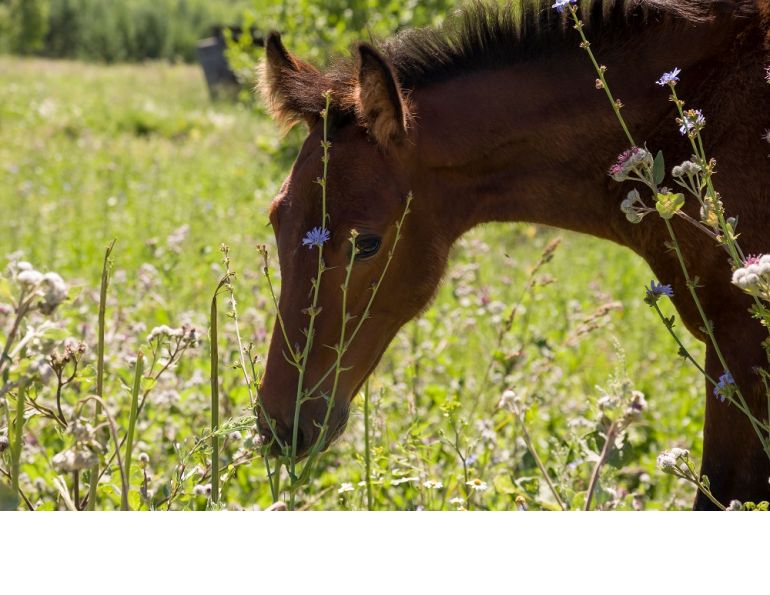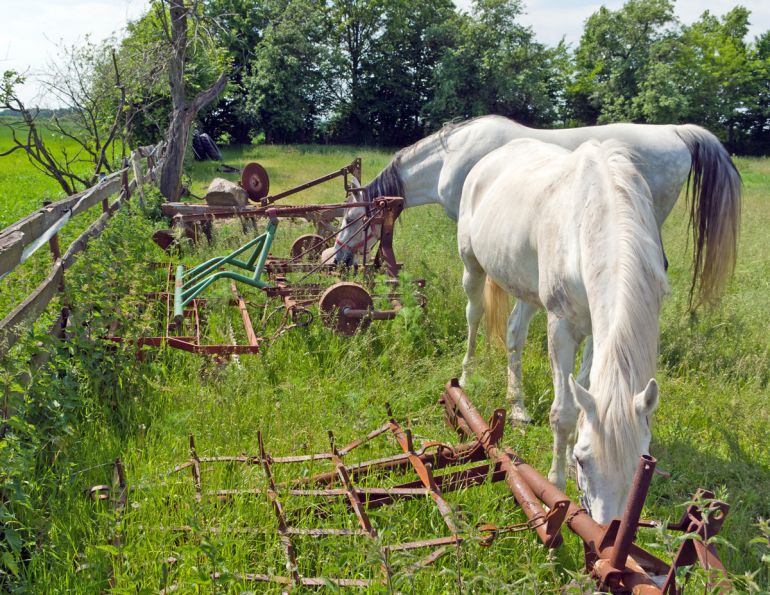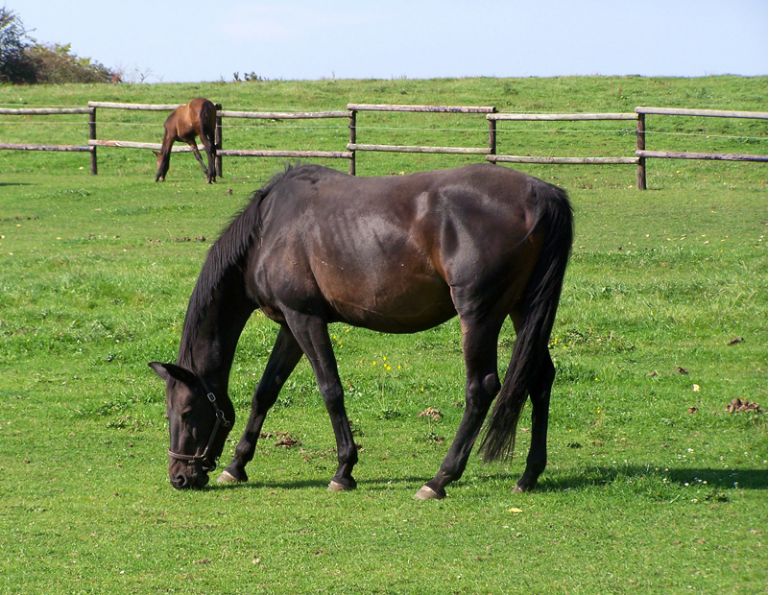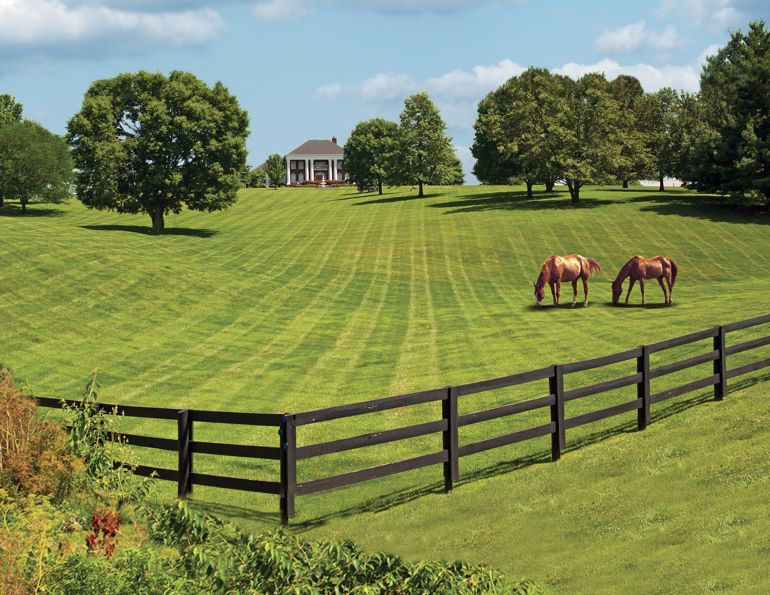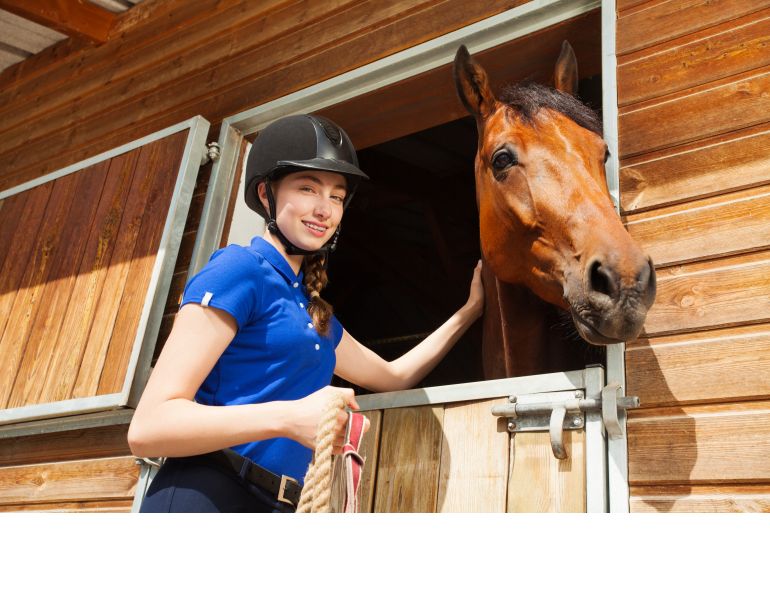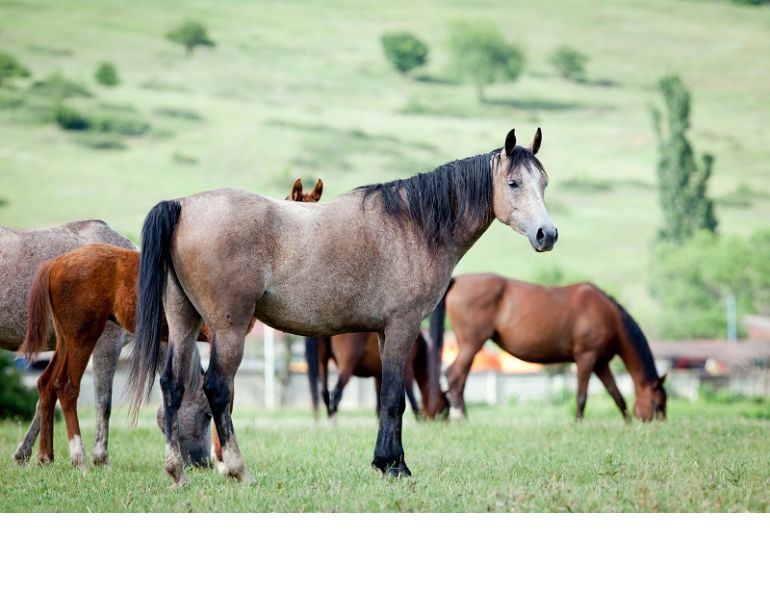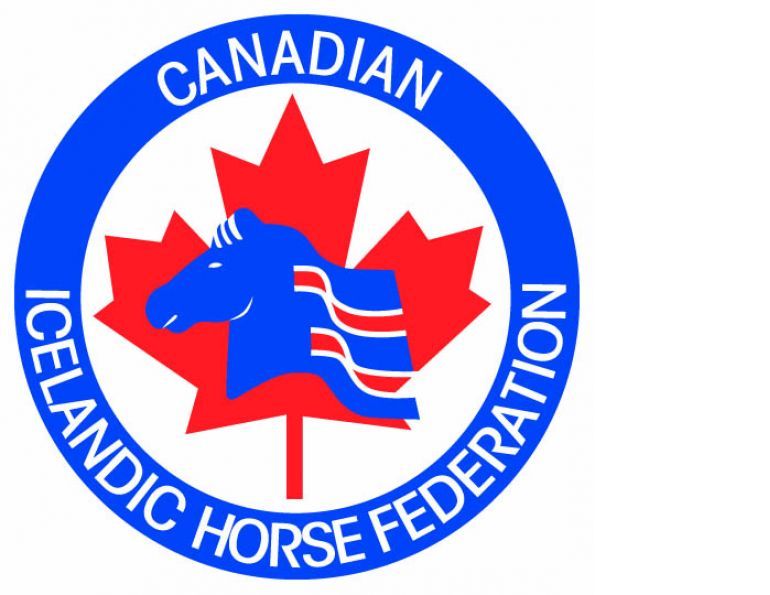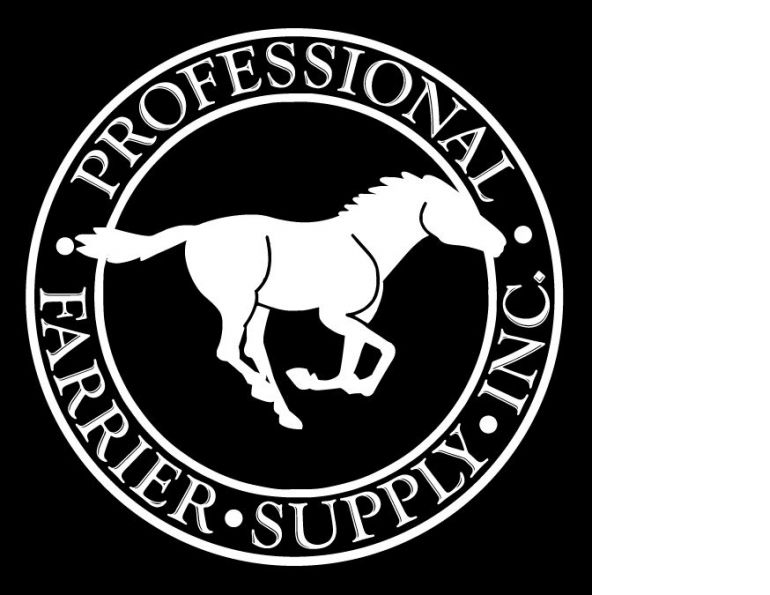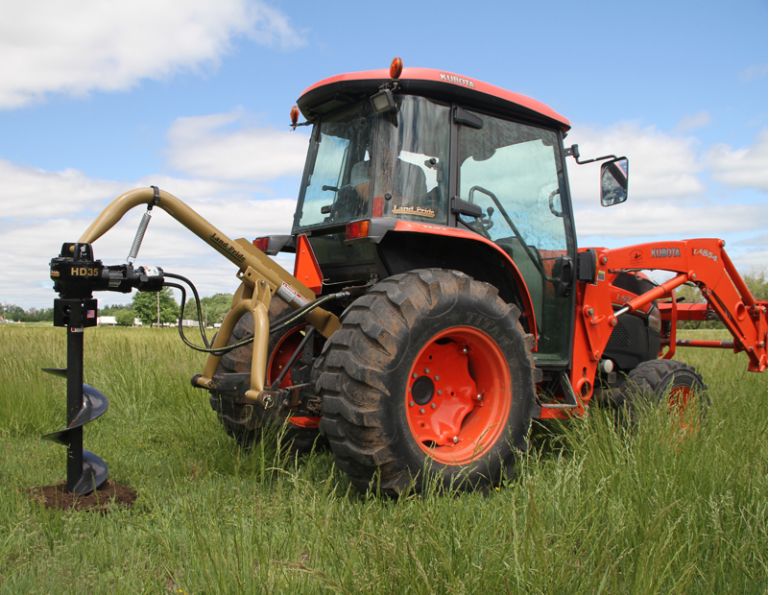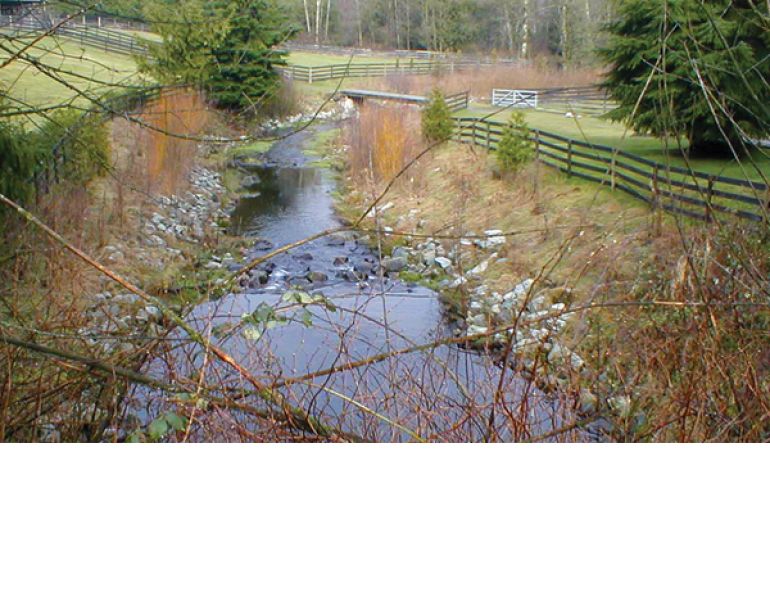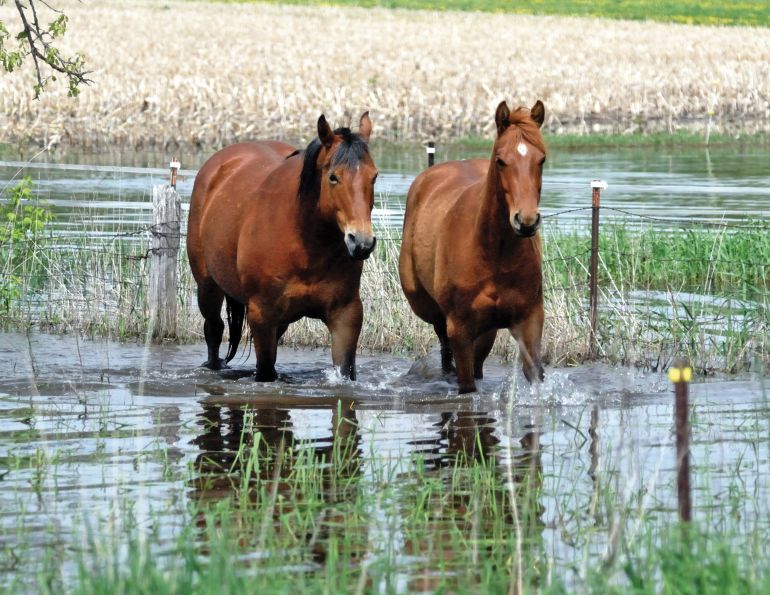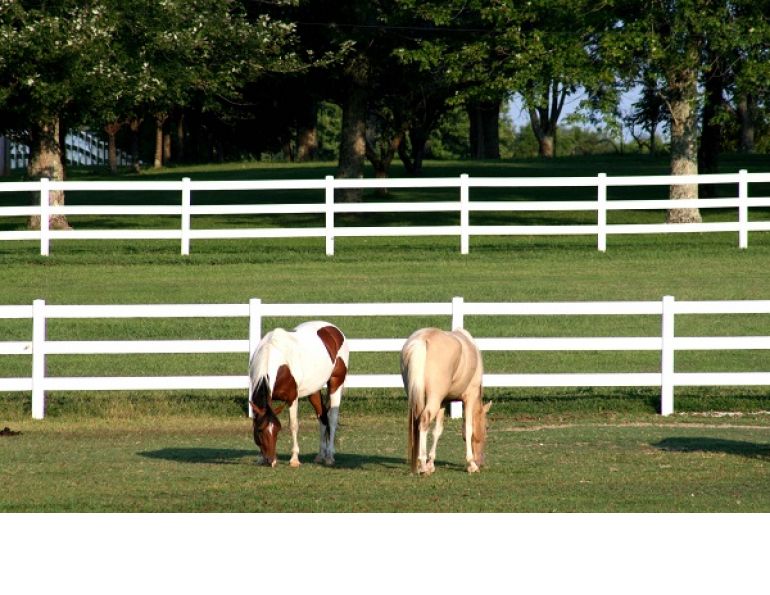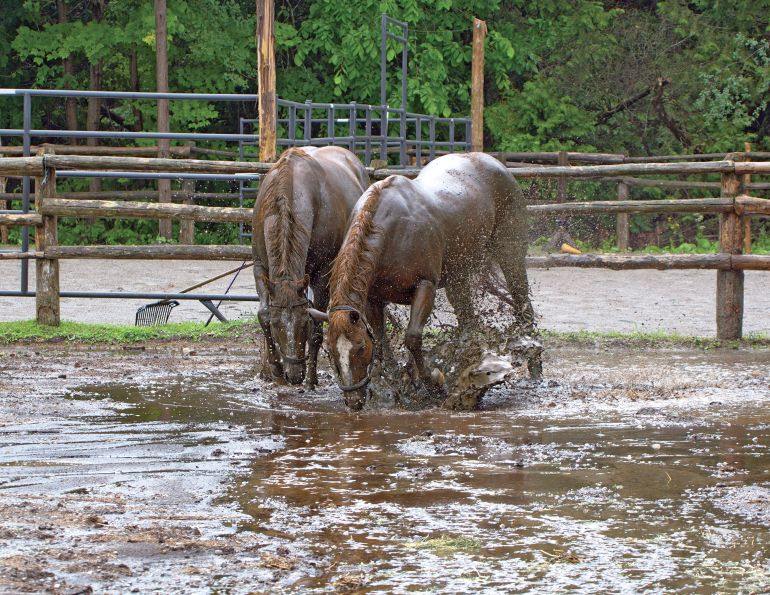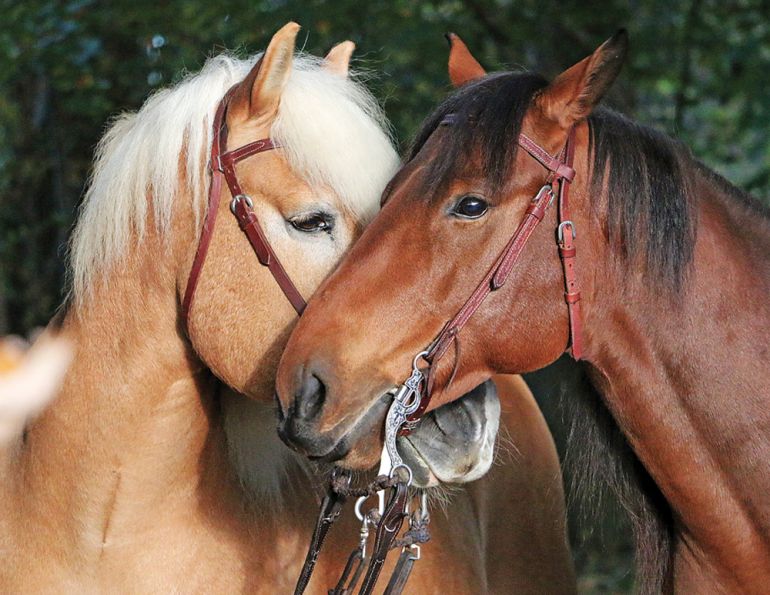By Jess Hallas-Kilcoyne
A common problem during the fall and winter months, muddy footing in horse turnout areas not only increases the difficulty of daily barn chores and grooming routines for owners, but creates a living environment for your horse that is neither safe nor healthy.
As well as providing an ideal breeding ground for bacteria and fungi that cause, among other conditions, scratches (also called mud fever) and thrush, muddy footing in horse paddocks can also lead to lost horseshoes, soft hooves, and injuries caused by slipping on the slick footing. Additionally, feeding your horse on a muddy surface can result in ingestion of dirt or sand particles that could cause colic.
Muddy paddocks can also have a negative environmental impact. Water runoff containing soil and traces of manure can contaminate local waterways and, if it leaches into the groundwater on your property, can also contaminate your well water.
Mud = Water + Soil + Manure
Muddy footing tends to form first in high traffic areas of the paddock – gateways, around the water trough, feeding areas – where the frequent tramping of horse hooves churns up the topsoil and compacts the soil below. The soil compaction increases until eventually the rainwater, unable to penetrate and filter down through the soil, collects and pools on top, mixing with the topsoil and any organics – mostly manure but can also include hay and shavings – that have been trampled into the topsoil. This blend of ingredients (water, soil, and manure) is a recipe for mud.
Planning for Prevention
When it comes to mud management, an ounce of prevention is worth a pound of cure. Here are some simple strategies for preventing muddy footing from forming in paddocks in the first place:
Paddock Plotting: Ideally, paddocks should be situated on high ground with good natural drainage and a slope of one to two percent away from the barn, riding arena, and any natural waterways. If possible, the locations of gates, drinking water sources, and feeding areas should be in the areas of highest elevation.
Diverting Drainage: If a paddock is less than ideally located in a low-lying area, accumulation of surface runoff water is all but guaranteed unless you can divert it. A French drain is a trench that is dug into the ground and filled in with gravel (sometimes drainage pipe is laid in and then covered with gravel fill). Surface runoff water flows onto the gravel and trickles down into the trench, where it flows away and is emptied at a distance from the paddock area.
Related: TLC for Horse Barns & Properties
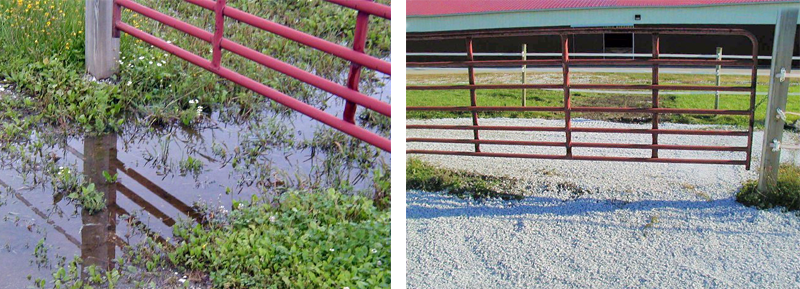
BEFORE (left): The low patches of ground that tend to form in and around paddock gateways and collect rainwater are a quagmire waiting to happen. AFTER (right): Filling in these low patches and raising the ground level in the entire gateway area with 3/8-inch to 5/8-inch screened gravel should help prevent mud from forming and provide firmer footing through the mud-prone months ahead. Photos: eXtensionHorses/Flickr
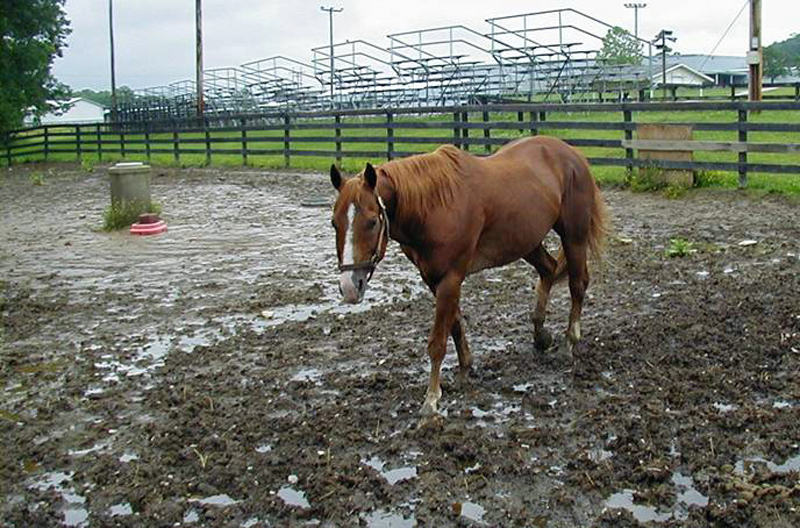
As well as being a major eyesore, muddy paddock footing increases the risk of horse health problems such as scratches, thrush, and injuries sustained from slipping on the slick surface. Photographer: Betsy Grenne U of Vermont/Flickr
Forms of Footing: The most common types of paddock footing are hogfuel (wood chips or shreds), sand, and gravel – each with its advantages and disadvantages. Hogfuel provides a good, stable surface but, as an organic material, the wood chips are subject to decomposition and over time will break down into fine particles that will contribute to mud unless removed and replaced with new hogfuel. Sand and gravel have the advantage of not breaking down like wood products do. Coarse, washed sand is comfortable and drains well, but horses should never be fed on sand as ingestion can result in sand colic. Gravel provides solid footing and excellent drainage, although your horse will be uncomfortable standing on screened gravel larger than 5/8-inch. While an expensive option, gravel footing can be limited to high traffic areas if budget is a concern.
Manure Management: Picking out the paddocks frequently prevents the manure from being trampled into the footing and mixing with the topsoil, thus minimizing the amount of mud that forms in the paddocks.
Rerouting Rainwater: Divert clean rainwater away from the paddocks by installing rain gutters and downspouts on the barn, shelters, and outbuildings. Make sure the roof runoff system empties downhill of the paddocks and barn area in a location where it will not become contaminated with manure.
Rest by Rotation: If you have fewer horses than you do paddocks, a rotational turnout schedule will allow each empty paddock in turn to rest, giving the footing a break from the hard use inflicted by horse hooves. The more paddocks in the turnout rotation, the longer the rest period enjoyed by each paddock. If you do not have the luxury of extra paddocks, you can divide larger paddocks and rotate the use of the paddock sections.
Sacrifice Area Set-up: The term “sacrifice area” usually refers to a paddock that is used for turnout when the field or pasture is too wet. However, a smaller paddock can serve as a short-term sacrifice area for turnout on the wettest days of the year to save larger paddocks whose size is cost prohibitive to the maintenance of its footing. This sort of “mini sacrifice area” can also be incorporated into your regular paddock rotation schedule to ensure maximum rest for your other paddocks.
Related: Let's Talk Mud
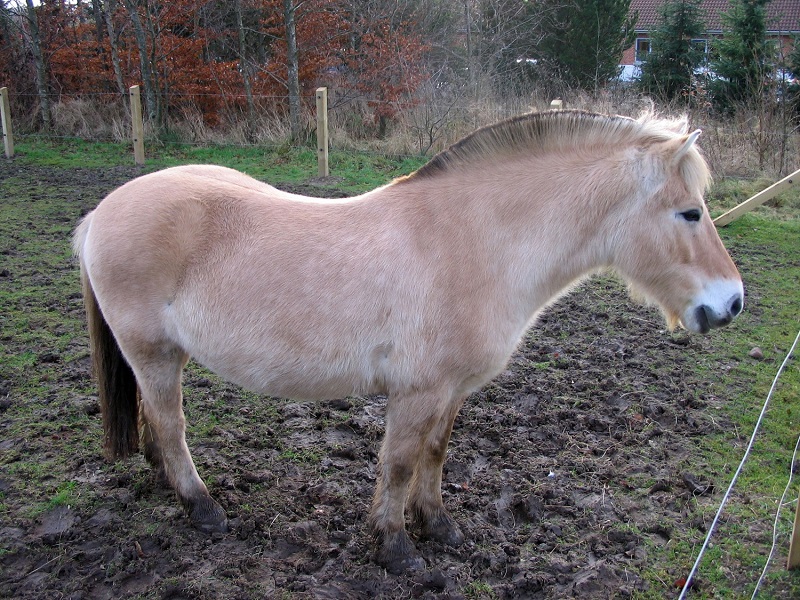
A “sacrifice area” is a smaller paddock that can be used for turnout when the larger field or paddock is too wet. Paddocks themselves should be on a rotational turnout schedule to allow the footing time to rest.
Carrying Out the Cure
If it’s too late for preventative measures because your paddock is already a quagmire, don’t despair. There is a way to “spot treat” muddy patches.
Step 1: Remove the topsoil in the problem area to a depth of six to eight inches.
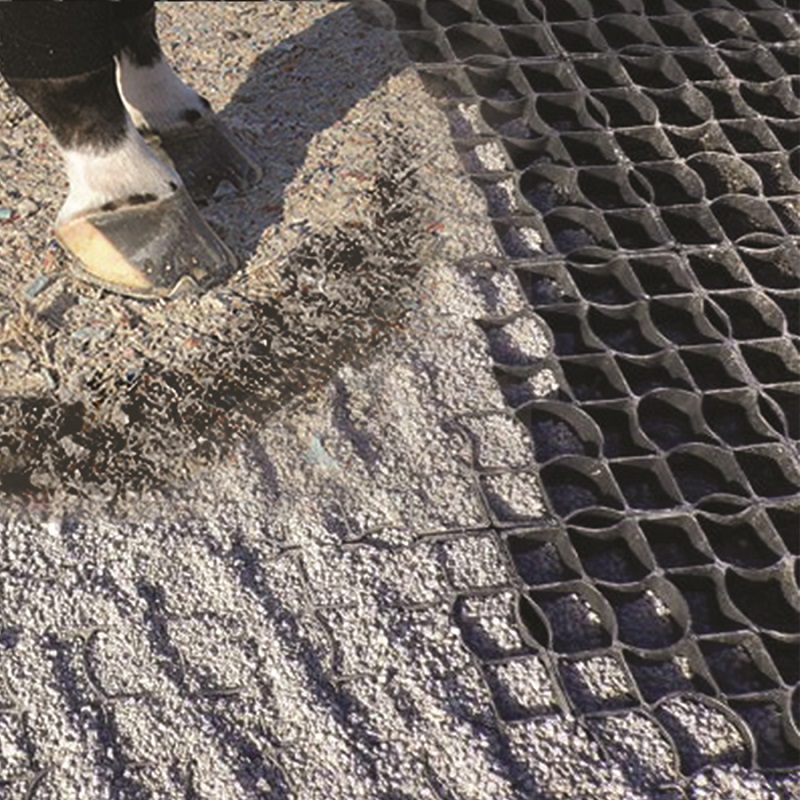
Footing grid systems are designed to provide a stable base for the footing material while facilitating drainage of rainwater – functions which help minimize the occurrence of muddy paddock footing. Photo: Courtesy of Hi-Hog Farm & Ranch Equipment Ltd.
Step 2: Lay down a layer of geotextile fabric (sometimes called filter fabric or landscape cloth), followed by three to four inches of 1.5 to 1.75-inch crushed stone, topped by another layer of geotextile fabric.
Step 3: Cover the geotextile fabric, making sure the edges are securely buried, with a minimum of six inches of the footing material of your choice.
The “sandwich” described in Step 2, created by the two layers of geotextile fabric and the crushed stone in between, acts as a water-permeable mechanical barrier that prevents the footing above from sinking into and mixing with the soil below, while in no way hindering drainage. Commercially available alternatives to this “sandwich” exist in the form of footing stabilization grid systems that consist of interlocking panels in a synthetic grid. The grid cells, which are porous to facilitate drainage, are filled in with gravel before being covered by the minimum six inches of footing material – usually gravel. The result is a stable base for the footing that drains well and reduces soil compaction and erosion. These grid systems can be installed throughout the entire paddock or in specific areas as needed.
Related: Fundamentals of Proper Hoof Care
Related: How to Diagnose, Treat & Prevent Rain Rot in Horses
Main photo: Shutterstock/Polarpix



